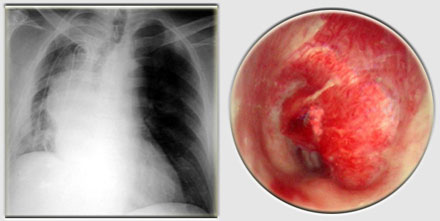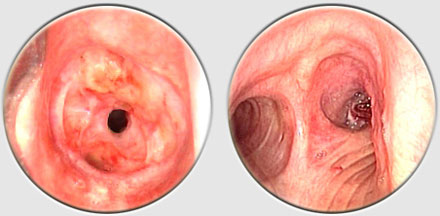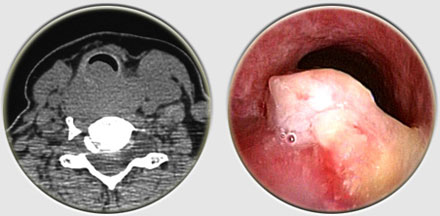 |
Index >
Principles > Physiologic constraints |
Physiologic constraints |
|
The efficacy of respiration depends on a variety of factors. Respiratory insufficiency can be restrictive, due to a loss of pulmonary parenchyma or a ventilatory abnormality, but it can also be obstructive, due to either permanent or reversible airflow obstruction. Treating respiratory insufficiency due to obstruction of the trachea and major bronchi is the principal concern of interventional bronchoscopy.
Obstruction of the trachea or main stem bronchi can be well tolerated for a prolonged period of time. It may or may not become clinically apparent depending on the severity of the stenosis, the patient´s pulmonary reserve, the accumulation of secretions distal to the obstruction, and the relative progression of the obstruction.
For example, tracheal stenosis appearing suddenly often leads to respiratory distress prompting emergent treatment, while a well-tolerated bronchial obstruction can become decompensated due to atelectasis caused by accumulated secretions or blood.
On the other hand, progressive obstruction of the trachea by a goiter or slow growing tumor can often be well tolerated for a long time. Consequently, all of these considerations must be taken into account when choosing a treatment plan. Either way, a rapid restoration of airflow and the maintenance of a patent airway are key elements of any successful therapy. |
|
move
up |
move
down |
|
previous
|
next |





